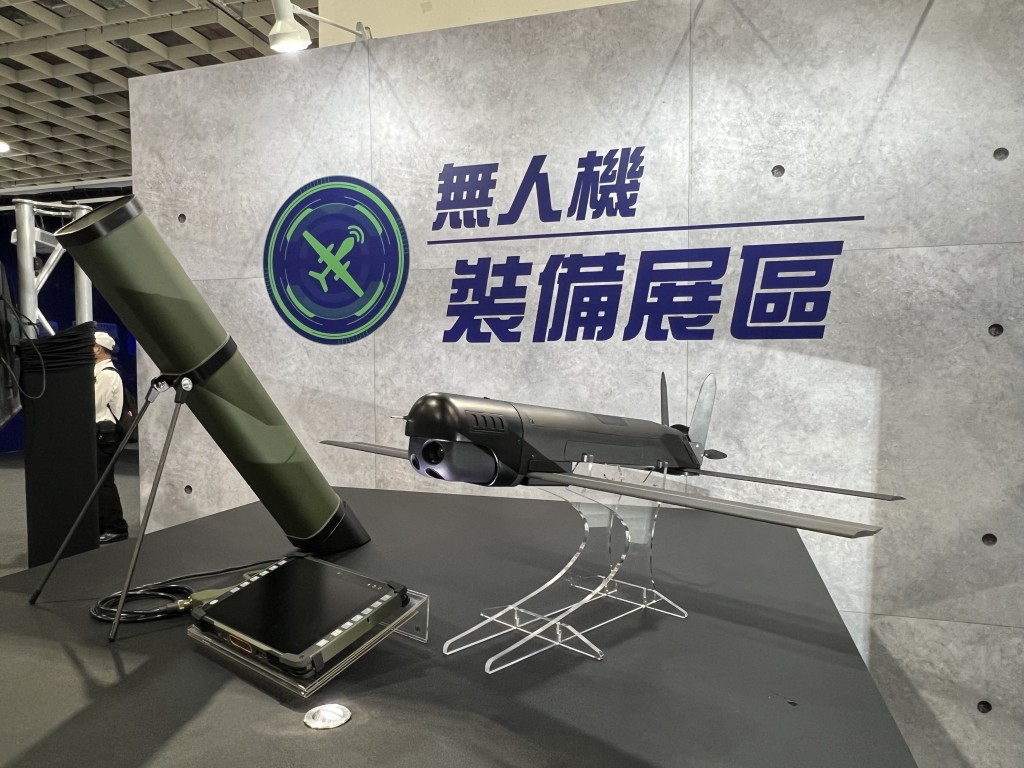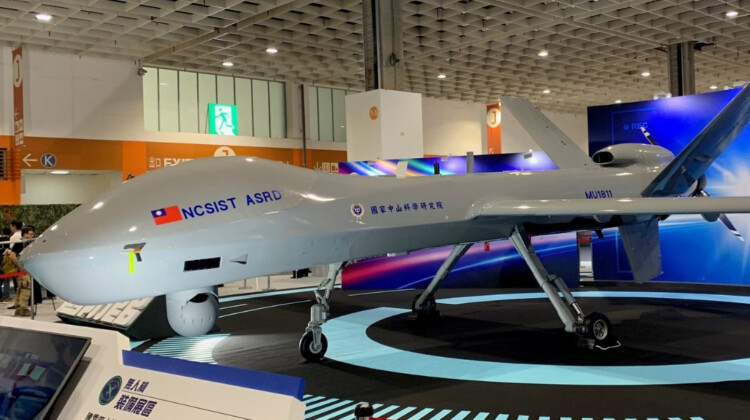Last week, the National Chung Shan Institute of Science and Technology (NCSIST) made a significant stride at the 2023 Taipei Aerospace and Defense Technology Exhibition (TADTE), where it emphasized Taiwan’s commitment to enhancing its asymmetric warfare capabilities.
The exhibition, held at the Nangang Exhibition Center and running from September 14th to 19th, showcased a range of cutting-edge drones and highlighted Taiwan’s evolving defense strategy.
Advanced Drone Technology: Taiwan’s Latest Loitering Unmanned Aircraft
At the heart of the exhibition was an entire pavilion dedicated to displaying ten of NCSIST’s latest advanced drones, each with unique capabilities designed to bolster Taiwan’s defense. Among these drones, two stood out as particularly notable: the Loitering Unmanned Aircraft Types I and II.
Loitering Unmanned Aircraft Type I: This variant, launched by a single soldier, operates on a principle similar to the American-built Switchblade loitering munition. It boasts precision capabilities for Beyond Visual Range strikes through image tracking and pattern recognition. The Type I drone can fly for approximately 15 minutes, covering a maximum operational range of 10 km.

Loitering Unmanned Aircraft Type II: Requiring a crew of three for operation, this tube-launched unmanned aircraft can conduct both day and night operations. With its high-explosive warhead, it excels at saturation attacks on both fixed and mobile targets, making it compatible with various vehicles, including Humvees.
Additionally, NCSIST unveiled a decoy unmanned aircraft designed to activate enemy radars, working in tandem with the Chien Hsiang anti-radiation loitering munition to detect and destroy them. The Chien Hsiang drone can travel up to 1,000 kilometers, reaching speeds of 500 to 600 kph during target dives. Taiwan plans to produce 104 of these loitering munitions by 2025, and both drones feature fire-and-forget technology capable of operating in all weather conditions.
The Teng Yun, a long-range, long-endurance unmanned aircraft, was another highlight of the exhibition. This drone plays a vital role in day and night Intelligence, Surveillance, and Reconnaissance (ISR) missions, offering an impressive flight endurance of up to 20 hours and a travel range of more than 1,100 km.
Taiwan’s Bold Vision for Drone Acquisition
The strong emphasis on drones aligns with Taiwan’s vision for its defense strategy. In the latest defense ministry white paper released on September 12th, Taiwan announced plans to acquire 7,700 unmanned aerial vehicles by 2028, with 700 designated as military-grade and 7,000 as commercial-grade. Already, five military prototypes have been completed, and 36 units are set to be delivered to the military by July 31st, highlighting Taiwan’s commitment to modernizing its defense capabilities.
Drones have emerged as game-changing weapons in modern warfare, as evidenced by the ongoing conflict in Ukraine. These unmanned aerial vehicles are vital for Taiwan to strengthen its defense against potential threats, particularly from China.
It was a great honor to introduce our technology to President @iingwen 💖#TADTE2023@TADTEDrone pic.twitter.com/PXxiuW8dYk
— Taiwan Space Agency (TASA) (@TASA_Taiwan) September 15, 2023
Taiwan’s Commitment to Drone Innovation
In line with this strategic focus, President Tsai Ing-wen inaugurated a government drone Research and development (R&D) facility in Chiayi County in August 2022. Twenty drone companies have already established their presence at the center, which features a testing site, a drone operator licensing facility, a drone-related academy, and a national arena for drone-related competitions.
President Tsai, who attended the Taipei Aerospace and Defense Technology Exhibition, emphasized Taiwan’s commitment to mass-producing drones to meet the military’s needs while also fostering civilian drone applications. She stated:
“This will maximize production capacity and help to increase Taiwan’s drone research and development capabilities.”
Drones played a central role in the exhibition, with a forum dedicated to explaining Taiwan’s drone development reaching capacity quickly.
Chi Li-ping, representing the NCSIST, acknowledged that the United States remained at the forefront of drone development and production but noted that Taiwan was rapidly catching up. Taiwan’s advanced design and materials for drone production have gained international recognition, attracting interest from countries such as Japan, Australia, the United States, and Germany.
Drone Revolution: From Defense to Civilian Applications
Taiwan’s civilian drone applications have also demonstrated their potential to address logistical challenges posed by the island’s rugged terrain. Collaborations between the Ministry of Transportation and the postal service have successfully trialed package delivery using drones in mountainous areas and between Taiwan’s outlying islands.
Taiwan’s increasing drone production capabilities reflect its growing independence, with domestic manufacturers gaining the ability to produce critical technologies locally. The commitment to assembling 7,700 drones by 2028, as outlined in the defense white paper, reinforces Taiwan’s dedication to maintaining a robust defense strategy in an ever-evolving global landscape.
~
In conclusion, the 2023 Taipei Aerospace and Defense Technology Exhibition showcased Taiwan’s impressive advancements in drone technology, underscoring the nation’s commitment to bolstering its defense capabilities and enhancing its independence in this critical field. With a strong focus on both military and civilian applications, Taiwan is poised to become a significant player in the world of drones.










COMMENTS
You must become a subscriber or login to view or post comments on this article.